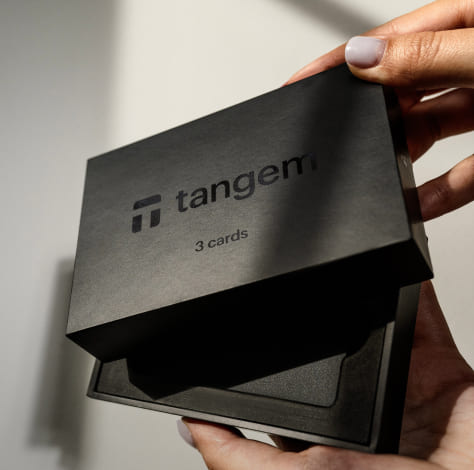
You may not realize the importance of hardware wallet security in protecting your digital assets. Adhering to internationally recognized standards like ISO 27001 ensures that a provider maintains an effective information security management system. Additionally, Common Criteria provides a framework for testing and certifying the security of hardware wallets, indicating their resilience against various threats. Understanding these standards is vital for anyone looking to safeguard their cryptocurrencies effectively.
Key Takeaways:
- ISO 27001 provides a framework for establishing and maintaining an information security management system, which is vital for hardware wallet security.
- Common Criteria offers a standardized evaluation of security features in hardware wallets, ensuring they meet defined security assurance levels.
- Compliance with these standards can enhance consumer trust and improve vulnerability management in the hardware wallet ecosystem.
Overview of Hardware Wallets
Before delving into the security standards, it’s crucial to understand what hardware wallets are and their purpose in the digital asset ecosystem. Hardware wallets are physical devices designed to securely store cryptocurrencies and other digital assets offline. They enable users to manage their private keys, ensuring that sensitive information remains protected from online threats, such as hacking and phishing attacks.
Definition and Functionality
Between the increasing need for secure digital asset management and the growing number of cyber threats, hardware wallets offer a reliable solution. These devices utilize a combination of security features, such as secure enclaves and PIN codes, to protect funds. When a transaction is required, the wallet interacts with software interfaces to sign transactions without exposing the private key to the internet.
Types of Hardware Wallets
Between the various models available, hardware wallets can be categorized based on their features and designs. The common types include USB-connected wallets, standalone devices, and multi-currency wallets. Each type offers unique advantages in terms of usability, security levels, and compatibility with different cryptocurrencies.
- USB-connected wallets
- Standalone devices
- Multi-currency wallets
- Secure backups
- Usability factors
Knowing the distinctions among these types helps users choose the right hardware wallet based on their specific needs.
| Type | Description |
| USB-connected | Connects to computers via USB interface. |
| Standalone | Functions independently, often with a display. |
| Multi-currency | Supports various cryptocurrencies. |
| Paperless | Usually offers advanced encryption methods. |
| Mobile compatibility | May work with mobile applications for convenience. |
Hardware wallets present a powerful option for securely storing digital assets due to their offline capabilities and robust security features. Each type offers specific functionalities tailored to different user needs and preferences. Understanding the landscape of hardware wallets is vital for any individual looking to safeguard their crypto investments.
- Offline capabilities
- Robust security features
- User-friendly interfaces
- Compatibility with various platforms
- Backup options available
Knowing the advantages of hardware wallets is crucial for informed investment decisions.
| Feature | Advantage |
| Offline storage | Protects against online threats. |
| Private key management | Ensures only the user has access. |
| Multi-currency support | Versatile for diverse portfolios. |
| Enhanced user interface | Makes transactions easier to execute. |
| Regular firmware updates | Improves security over time. |
Importance of Security Standards
Clearly, security standards play a vital role in establishing a baseline for the protection of sensitive information. They provide structured frameworks that organizations can follow to ensure that their systems are secure against threats and breaches. Adopting security standards not only reinforces an organization’s commitment to data protection but also enhances trust among customers and stakeholders.
Role of Security Standards in Cryptocurrency
Security standards are vital in the cryptocurrency space, where risks associated with digital assets are significant. By adhering to established security benchmarks, companies can safeguard wallets and exchanges, preventing unauthorized access and potential financial losses. This adherence also aids in regulatory compliance, ensuring that businesses meet legal requirements and avoid legal troubles.
Overview of ISO 27001
Any organization aiming for robust information security should consider ISO 27001, an international standard that outlines the requirements for an information security management system (ISMS). It helps organizations manage sensitive data, establishing a systematic approach to managing sensitive information securely. ISO 27001 is designed to help organizations implement and continually improve their ISMS, ensuring consistent protection of data.
Understanding ISO 27001 involves grasping its comprehensive framework that addresses risk management, data protection, and continuous improvement in security practices. Compliance with this standard reinforces an organization’s resilience against data breaches and contributes to a company’s overall reputation in the marketplace. By following ISO 27001 guidelines, organizations can effectively identify and mitigate risks, thereby enhancing the security posture of their hardware wallets.
ISO 27001 and Its Relevance
After assessing the evolving landscape of cybersecurity threats, ISO 27001 emerges as a vital framework for organizations seeking to safeguard sensitive information. It outlines a systematic approach to managing and protecting data, ensuring that organizations implement comprehensive security measures. With hardware wallets increasingly used for cryptocurrency storage, adhering to ISO 27001 is paramount to enhance trust among users and mitigate risks associated with data breaches.
ISO 27001 not only aids in identifying vulnerabilities but also establishes a clear structure for continuous improvement in information security management. Its relevance has grown as regulatory requirements and consumer expectations demand higher accountability in protecting sensitive data. Consequently, companies that align with ISO 27001 can significantly improve their resilience against security threats.
Key Principles of ISO 27001
One of the key principles of ISO 27001 is the implementation of a robust risk management process, which includes identifying, assessing, and treating information security risks. This structured approach allows organizations to prioritize their resources effectively and focus on the areas that pose the greatest threat to their data integrity. By fostering a culture of awareness and proactive measures, businesses can reduce the likelihood of incidents that compromise asset security.
Another crucial principle is the continuous improvement aspect embedded in the framework. Organizations are encouraged to regularly review and update their security measures, ensuring they remain effective against emerging threats. This commitment to ongoing vigilance not only enhances security posture but also demonstrates to stakeholders a serious dedication to protecting their interests.
Benefits of ISO 27001 Certification
Any organization pursuing ISO 27001 certification stands to gain numerous advantages, including improved credibility and customer trust. Achieving this internationally recognized standard signals to clients and partners that an organization prioritizes information security and is committed to maintaining high standards. This certification can differentiate businesses in a competitive market, fostering customer loyalty and enhancing overall reputation.
Due to the structured approach of ISO 27001, organizations can also streamline their processes, resulting in increased efficiency and cost savings. Adopting these standards encourages a culture of communication and collaboration around security matters, facilitating better risk management practices. Additionally, compliance with ISO 27001 often leads to reduced chances of data breaches, which can carry significant financial implications. As a result, the overall strength of security frameworks can translate into long-term sustainability and business viability.
Common Criteria for Hardware Wallets
All hardware wallets must comply with specific security standards to ensure the protection of sensitive data. The Common Criteria (CC) is a framework that establishes a global benchmark for evaluating the security properties of IT products and systems, including hardware wallets. This standard provides a comprehensive methodology to assess various aspects of security, enabling developers and consumers to trust the integrity of the devices they use for storing digital assets.
Understanding Common Criteria
One of the key components of the Common Criteria is its structured approach to security evaluation. The framework categorizes products based on their ability to meet defined security requirements, which can involve tests and evaluations conducted by accredited laboratories. By adhering to the Common Criteria, hardware wallet manufacturers can demonstrate their commitment to security and foster confidence among users regarding the protection of their private keys.
Evaluation Assurance Levels (EAL)
After establishing the necessary criteria for evaluation, the Common Criteria categorizes the security assurances into multiple Evaluation Assurance Levels (EALs). Each EAL indicates the rigor and depth of the evaluation process a product has undergone, ranging from EAL1 to EAL7. Higher levels signify more comprehensive testing and validation, leading to increased confidence in the product’s security posture. Choosing a hardware wallet that has achieved a higher EAL can significantly enhance user trust in the device.
Hence, the Evaluation Assurance Levels provide a standardized measure of assurance for hardware wallets in terms of security. Products evaluated at lower EALs may only undergo minimal testing, potentially exposing users to unaddressed vulnerabilities. In contrast, wallets that achieve higher EALs, especially levels 4 and above, have undergone rigorous evaluation, ensuring more robust protection against threats, which is especially important given the rising sophistication of cyberattacks targeting digital assets.
Comparison of ISO 27001 and Common Criteria
Keep in mind that both ISO 27001 and Common Criteria provide frameworks for ensuring security, but they cater to different aspects of information security. ISO 27001 focuses on establishing, implementing, maintaining, and continually improving an information security management system (ISMS), while Common Criteria is centered on the evaluation of security properties of IT products and systems.
| ISO 27001 | Common Criteria |
|---|---|
| Framework for ISMS | Evaluation of security properties |
| Principle of continual improvement | Standardized evaluation methodology |
| Management-focused | Product-focused |
| Risk-based approach | Criteria-based approach |
Similarities and Differences
Along with their distinct focuses, ISO 27001 and Common Criteria share some common ground in advocating for a comprehensive understanding of security threats and necessary controls. Both frameworks emphasize risk assessment and require ongoing management efforts to adapt to evolving threats. While ISO 27001 promotes a management-level overview of information security, Common Criteria specifically targets the technical assurance of products.
This divergence shows the necessity of both frameworks in the field of security. ISO 27001 ensures organizations implement robust information security management practices, while Common Criteria guarantees the technical trustworthiness of hardware wallets through a rigorous evaluation process. Thus, these frameworks can work together to provide a holistic security posture.
Use Cases in Hardware Wallet Security
For hardware wallets, implementing ISO 27001 aids companies in creating a robust organizational framework to manage security risks and policies. This framework is vital for continuously improving security measures against emerging threats. Conversely, Common Criteria offers a pivotal evaluation method to establish the security capabilities of the hardware wallets, making it easier for consumers to trust a product that has been evaluated against internationally recognized standards.
Further integration of both frameworks can significantly enhance security practices in hardware wallet development. By aligning operations with ISO 27001, organizations can ensure their security management practices are effective and adaptable, while Common Criteria provides independent validation of the security features of hardware wallets. This combination not only protects users’ assets but also enhances trust and confidence in hardware wallet technologies among consumers, crucial for the overall adoption of digital currencies.
Best Practices for Hardware Wallet Security
Unlike software wallets, hardware wallets offer enhanced protection due to their physical isolation from online threats. This security feature significantly reduces the risk of hacking and theft, making adherence to robust security measures imperative. Users should prioritize models compliant with high security standards, ensuring that any firmware updates or potential vulnerabilities are promptly addressed by the manufacturer.
Furthermore, implementing strong recovery options and encrypting sensitive data stored within these devices is vital. Regular audits and assessments can help maintain the integrity of the wallet, while multi-signature authentication adds an extra layer of security, safeguarding digital assets from unauthorized access.
Implementing Security Standards
Around the world, adherence to recognized security standards like ISO 27001 and Common Criteria is rapidly becoming a best practice for hardware wallet manufacturers. These frameworks provide comprehensive guidelines that ensure consistent security measures are implemented during the development, design, and deployment phases. By aligning with these standards, manufacturers can enhance not only the security features of their products but also build user trust through transparent compliance.
It is imperative for developers to frequently update their security protocols in accordance with these standards, as cyber threats continue to evolve. This ongoing commitment to security not only safeguards user data but also improves the overall resilience of hardware wallets against emerging vulnerabilities.
User Awareness and Education
Between the technological advancements in hardware wallets and the increasing sophistication of cyber threats, user education plays a pivotal role in maintaining asset security. Wallet users must understand the importance of securing their devices, including ensuring that their recovery seeds are stored in a safe location and that they are aware of phishing scams. Regular training and clear communication regarding best practices can help mitigate risks associated with human error.
In addition, providing resources for users to learn about potential threats and the features of their wallets can empower them to make informed decisions. Establishing a culture of security awareness is beneficial, as it can lead to the early detection of potential security breaches and foster a proactive approach to safeguarding assets. Users who are well-informed can greatly enhance the security posture of their hardware wallets, ensuring their investments remain protected.
To wrap up
As a reminder, adherence to ISO 27001 and Common Criteria standards enhances the security of hardware wallets by providing a structured approach to managing sensitive information and ensuring product evaluation against established benchmarks. These frameworks not only bolster user confidence but also promote consistency across the industry, ensuring that hardware wallet manufacturers prioritize robust security measures in their designs.
Ultimately, the integration of these security standards contributes to a more secure ecosystem for digital assets, reducing the risk of unauthorized access and potential vulnerabilities. By aligning with ISO 27001 and Common Criteria, hardware wallets can meet the evolving demands of users and regulatory requirements, fostering trust in the ongoing adoption of cryptocurrency technology.
FAQ
Q: What is ISO 27001 and how does it relate to hardware wallet security?
A: ISO 27001 is an international standard for managing information security. It provides a framework for establishing, implementing, maintaining, and continually improving an information security management system (ISMS). For hardware wallets, adhering to ISO 27001 ensures that security risks are properly assessed and mitigated, safeguarding sensitive information such as private keys from unauthorized access or breaches.
Q: What are Common Criteria in the context of hardware wallet security?
A: Common Criteria is a framework used for evaluating the security properties of IT products and systems. It establishes a standard for hardware wallets to be assessed against specific security requirements, including data confidentiality, integrity, and availability. Achieving certification under Common Criteria assures users that the wallet meets recognized security benchmarks, enhancing overall trust in the device.
Q: How do ISO 27001 and Common Criteria work together to ensure hardware wallet security?
A: ISO 27001 and Common Criteria complement each other by addressing different aspects of security. While ISO 27001 focuses on the management of information security systems and processes, Common Criteria provides a rigorous evaluation of the product’s technical security features. Together, they create a more robust security posture, ensuring that both organizational processes and product capabilities are aligned to effectively protect users’ assets.







